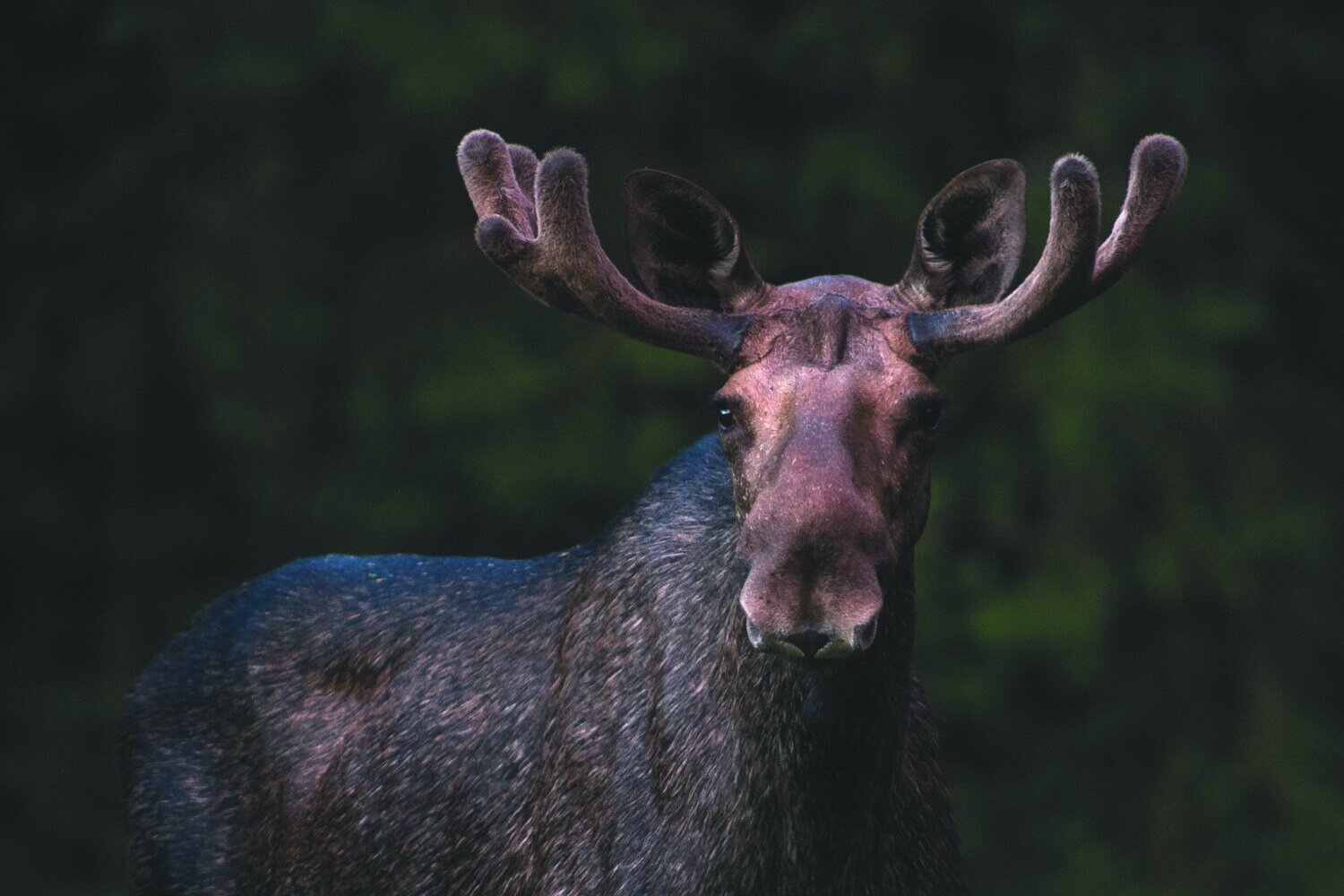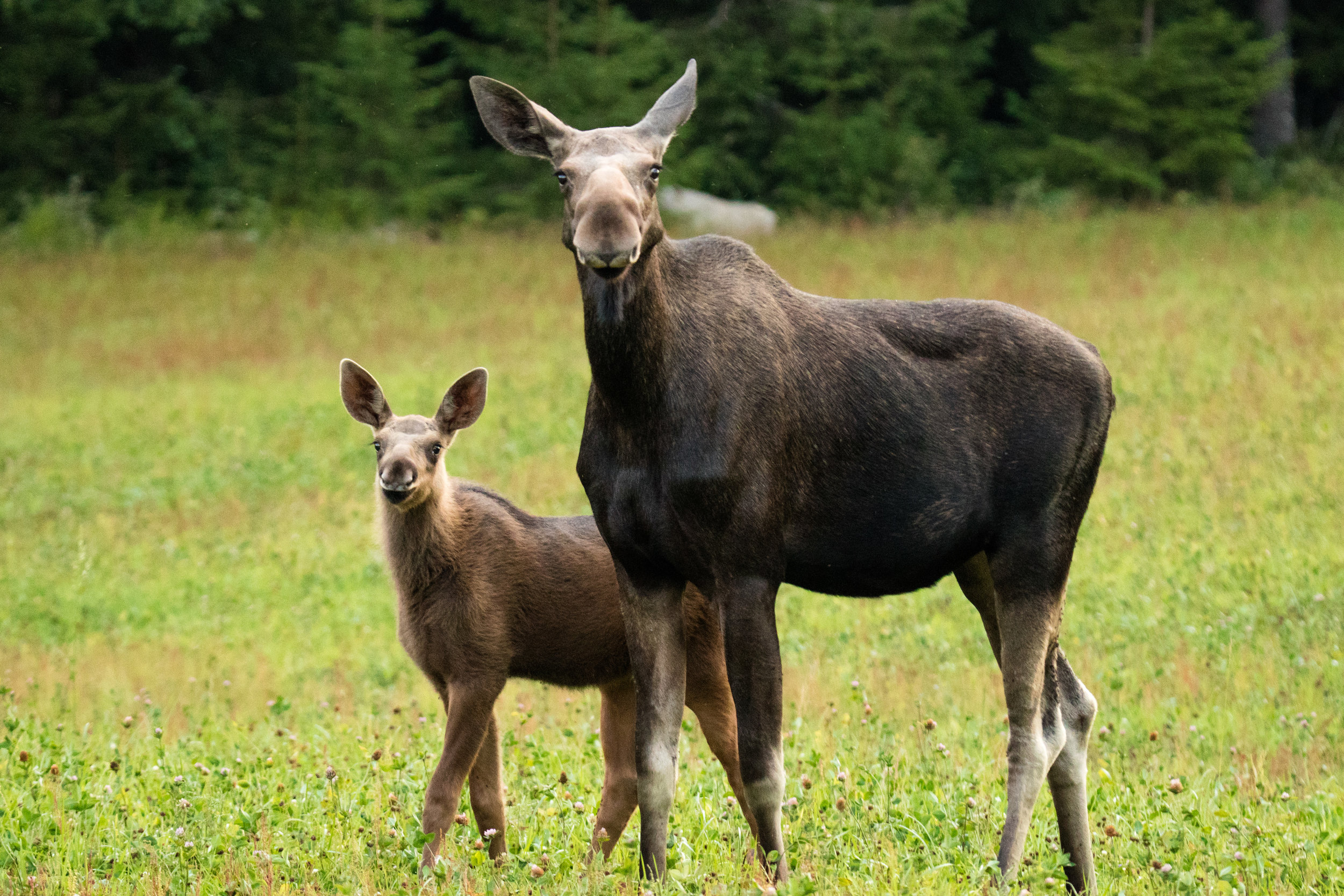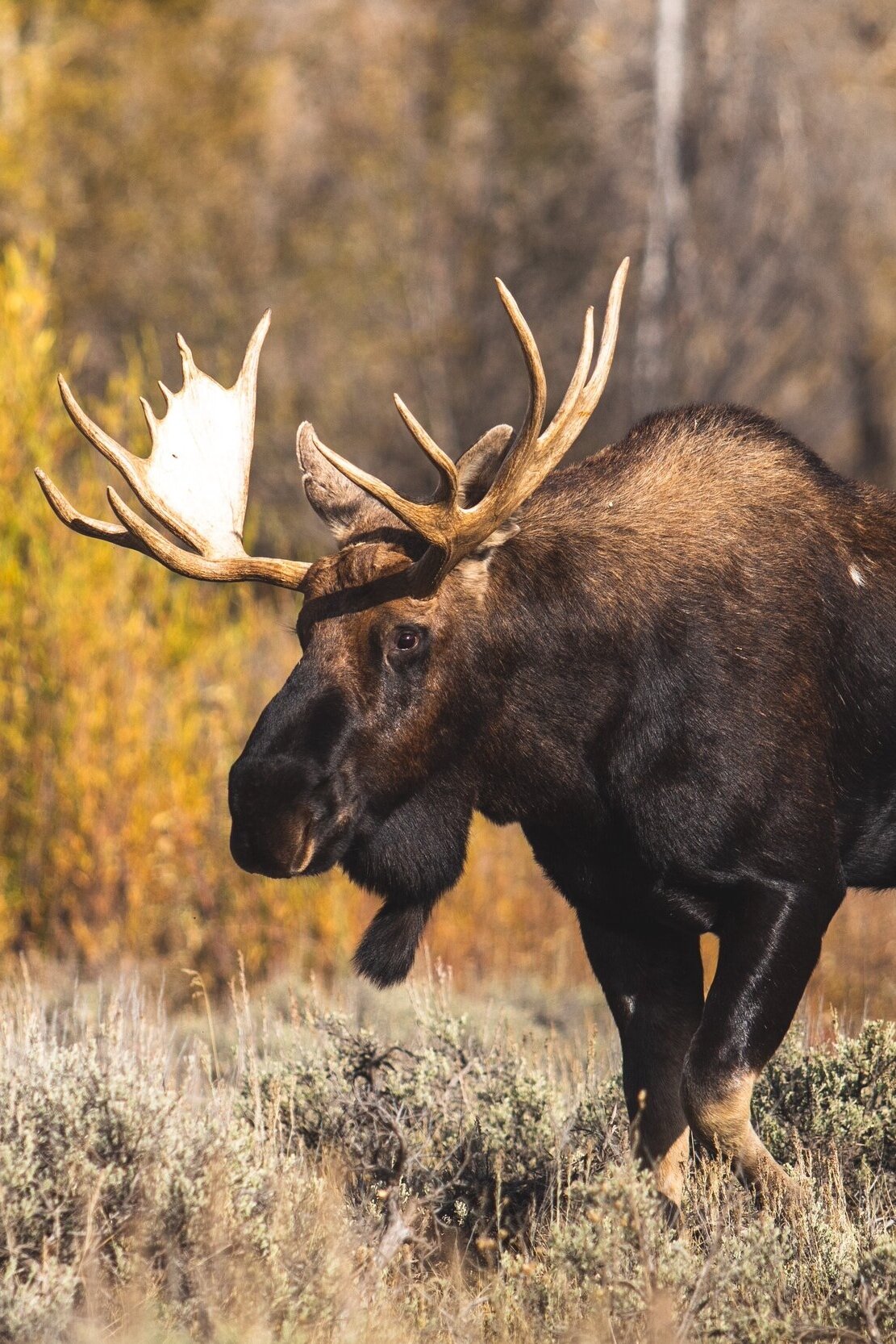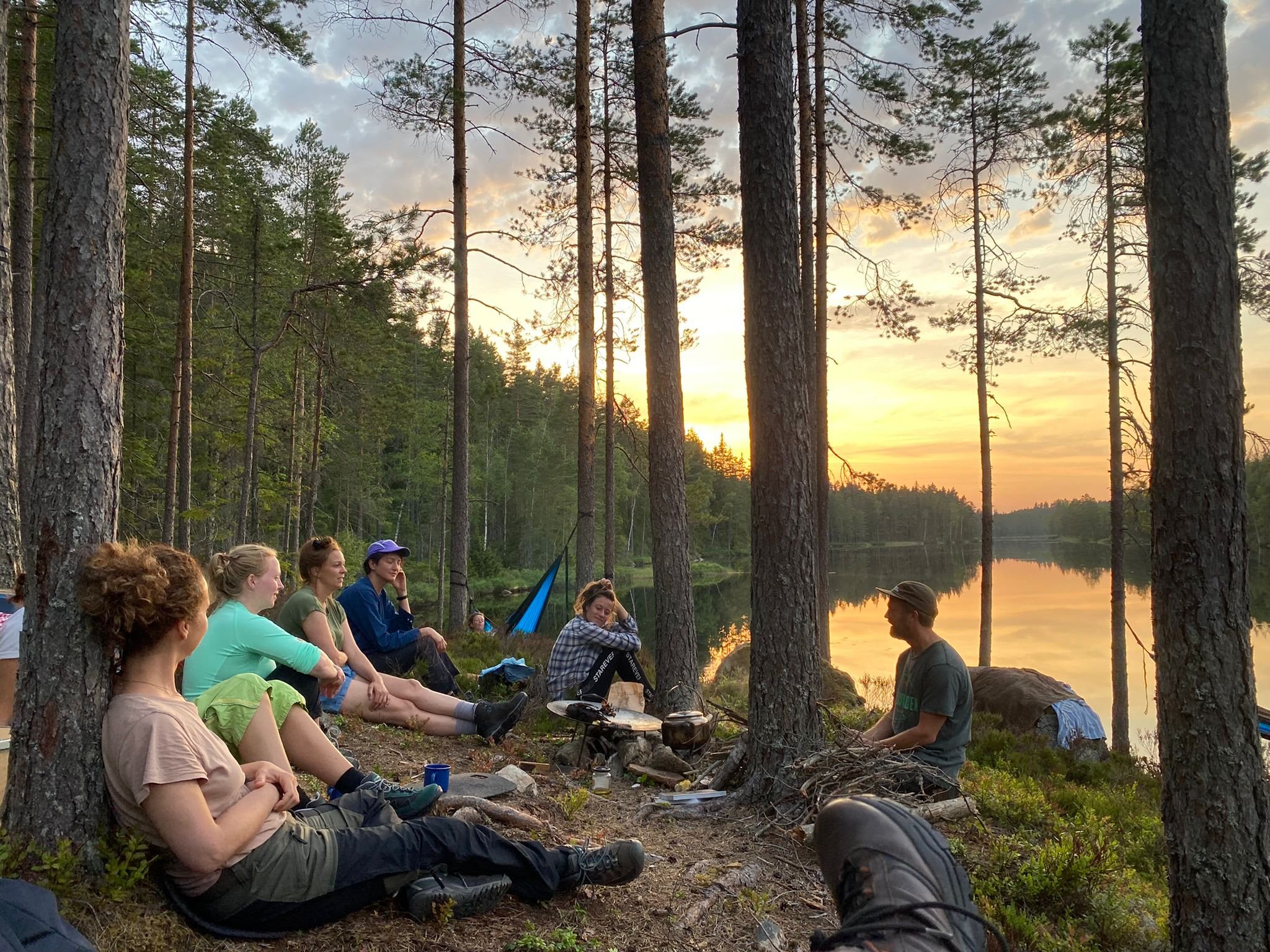Facts about Moose in Sweden
Meet the Moose: Sweden's Forest Giant
Sweden is home to the highest density of moose in the world. These iconic animals are often called "the king of the forest," and for good reason. With their towering legs and impressive antlers, moose are one of Sweden's most fascinating wild animals.
They are shy and silent, yet powerful and majestic. Seeing one in the wild is a rare and unforgettable moment.
Moose cow and her calf. Photo: Simon Green
Physical Features
Scientific name: Alces alces
Height: 170–210 cm at the shoulder
Weight: Bulls: 380–850 kg, Cows: 200–360 kg
Color: Dark brown with long, pale legs
Antlers: Only males have antlers, which they shed every winter and regrow in spring
Lifespan and Behavior
Moose can live up to 25 years, though most do not reach that age due to hunting and accidents. They are mostly solitary animals. Mothers stay with their calves for about one year.
They are calm but can be unpredictable if threatened. It's always best to admire them from a safe distance.
What Do Moose Eat?
Moose are herbivores. In summer they feed on green leaves, shrubs, twigs, and aquatic plants. In winter, when food is scarce, they rely on pine needles, bark, and tree buds.
Reproduction
The mating season (rut) is in late September to early October. After an 8-month pregnancy, cows usually give birth to one or two calves in May or June. On rare occasions, they can have three.
Calves weigh 10–15 kg at birth and can stand within hours.
Moose Population in Sweden
During summer, Sweden has about 300,000 to 400,000 moose. Around 100,000 calves are born each spring. Each autumn, about 90,000 moose are hunted, part of Sweden's wildlife management.
Moose are a central part of Swedish nature and culture, appearing on road signs, souvenirs, and even chocolate.
Where to See Moose in Sweden
Moose can be found in forests throughout Sweden, except on the island of Gotland. Some of the best areas for moose sightings are:
Skinnskatteberg – Home of WildSweden’s Moose Tours
Småland and Dalsland – Southern regions with large forests
Sarek National Park – Remote area with the largest moose
Moose are most active around dawn and dusk. The best chance of seeing them is with a local guide who knows where to look.
Moose Safaris with WildSweden
At WildSweden, we've been guiding moose safaris since 2003. Our guides know the forests, the signs, and the behavior of these animals. We never bait or feed wildlife. We simply move quietly, respectfully, and let the animals come to us.
Our guests often say that seeing a wild moose was the highlight of their trip to Sweden.
Moose cow and her calf during a Winter trip in Swedish Lapland. Photo: Sue and Alan Carwell.
Quick Facts Recap
Sweden has the densest moose population in the world
Only males have antlers
Moose can live up to 25 years
Calves are born in May/June
Best chance to see moose: late evening
Want to see a wild moose? Join one of our small-group trips in Skinnskatteberg. Whether you're a photographer or simply a nature lover, this is your chance to meet Sweden’s wild giants.
What’s the difference between Moose and Elk?
This can be confusing! In North America, moose are called moose. But in Europe, some people use the word elk for the same animal, Alces alces.
So in British English, “elk” and “moose” can mean the same thing.
In American English, “elk” refers to a completely different species, more like a large red deer, Cervus canadensis, commonly known as wapiti.
In Sweden, we’re talking about the big one — Alces alces — the one with the large antlers and long legs. The moose.
American Wapiti, also called American Elk. This is not a moose.
American Moose, which is the same species as the European Elk, just two different names.
European Elk, also called Eurasian Moose is the same species as the American Moose. But it is not the same species as the American Elk.








